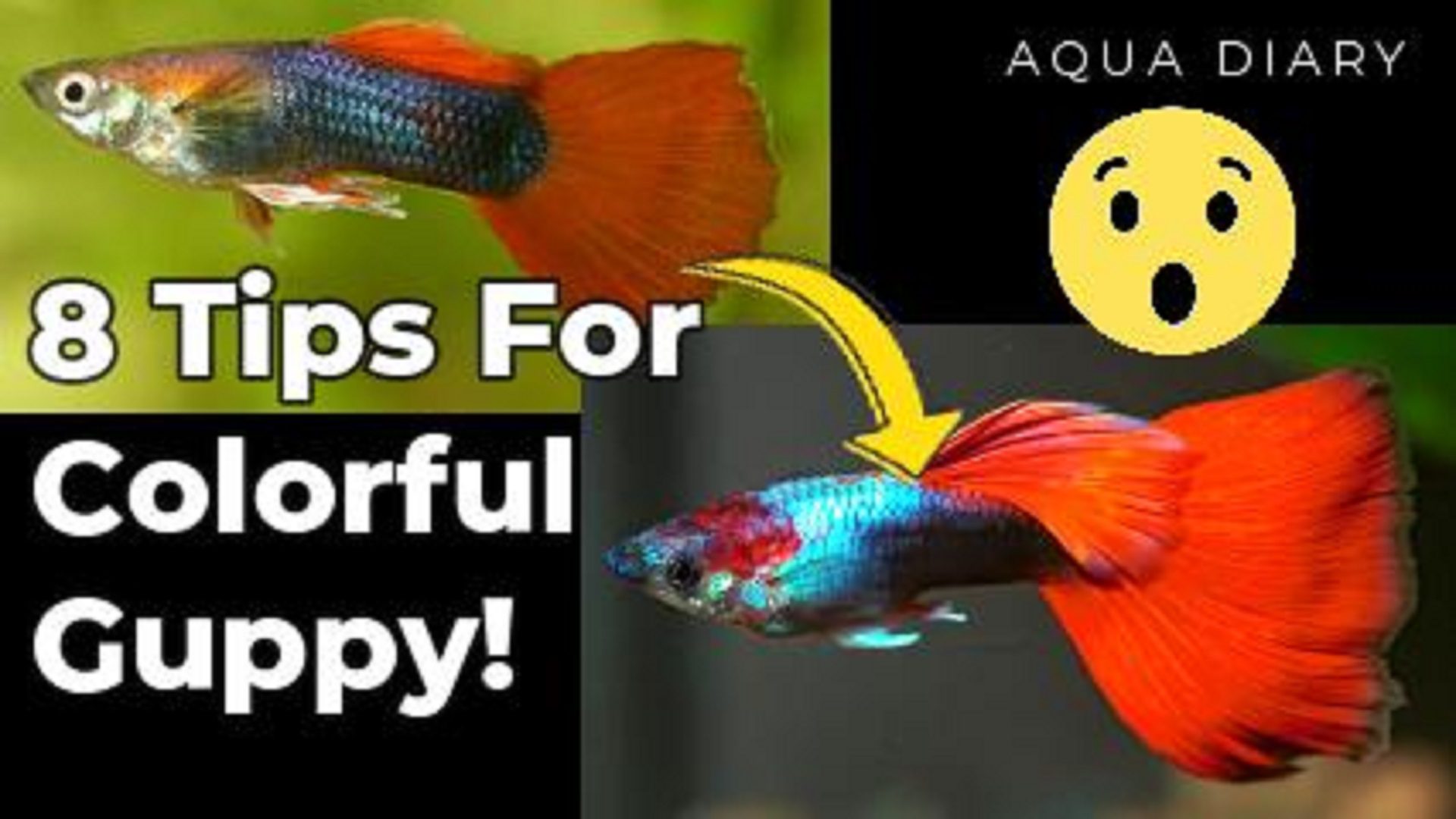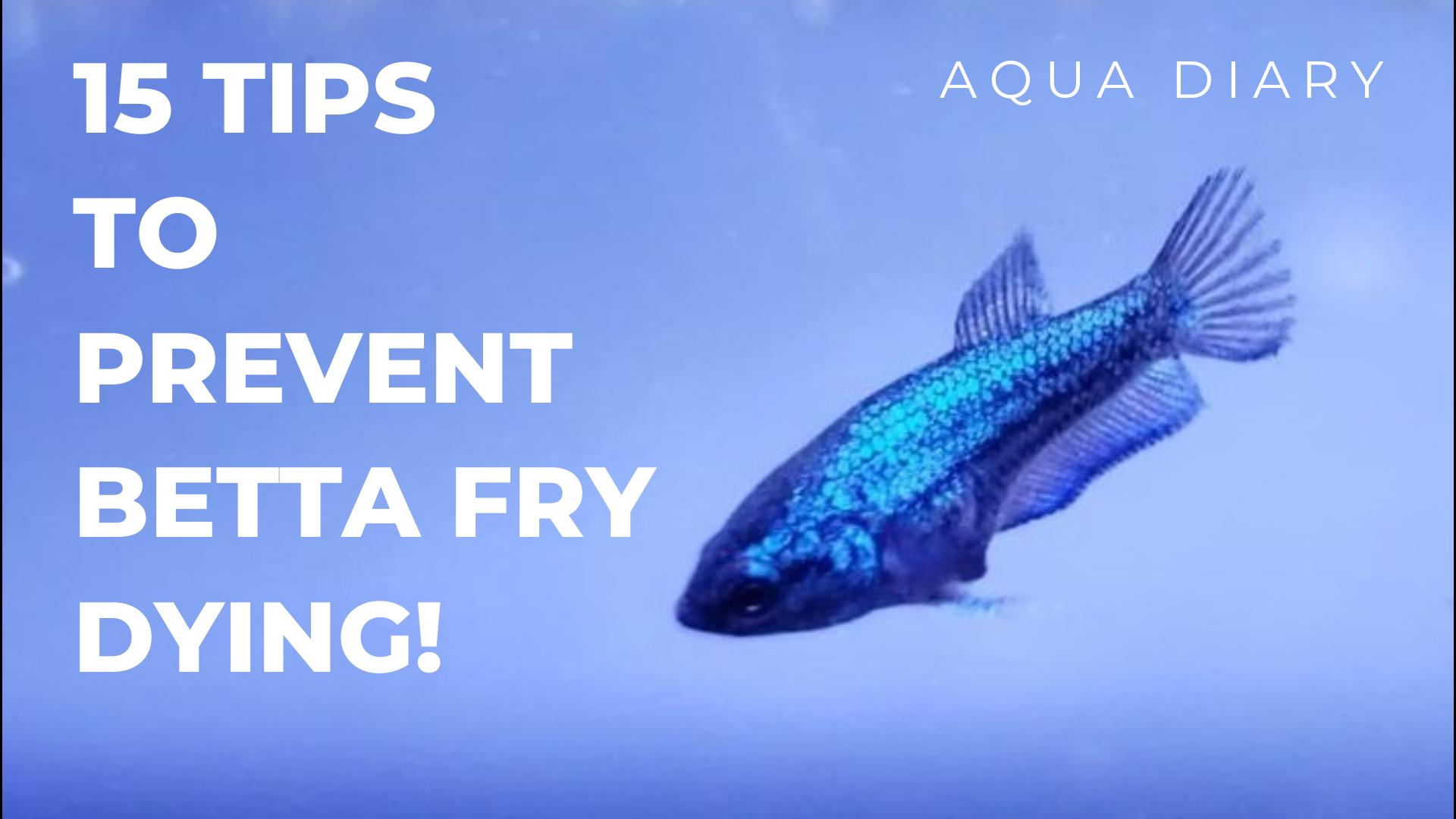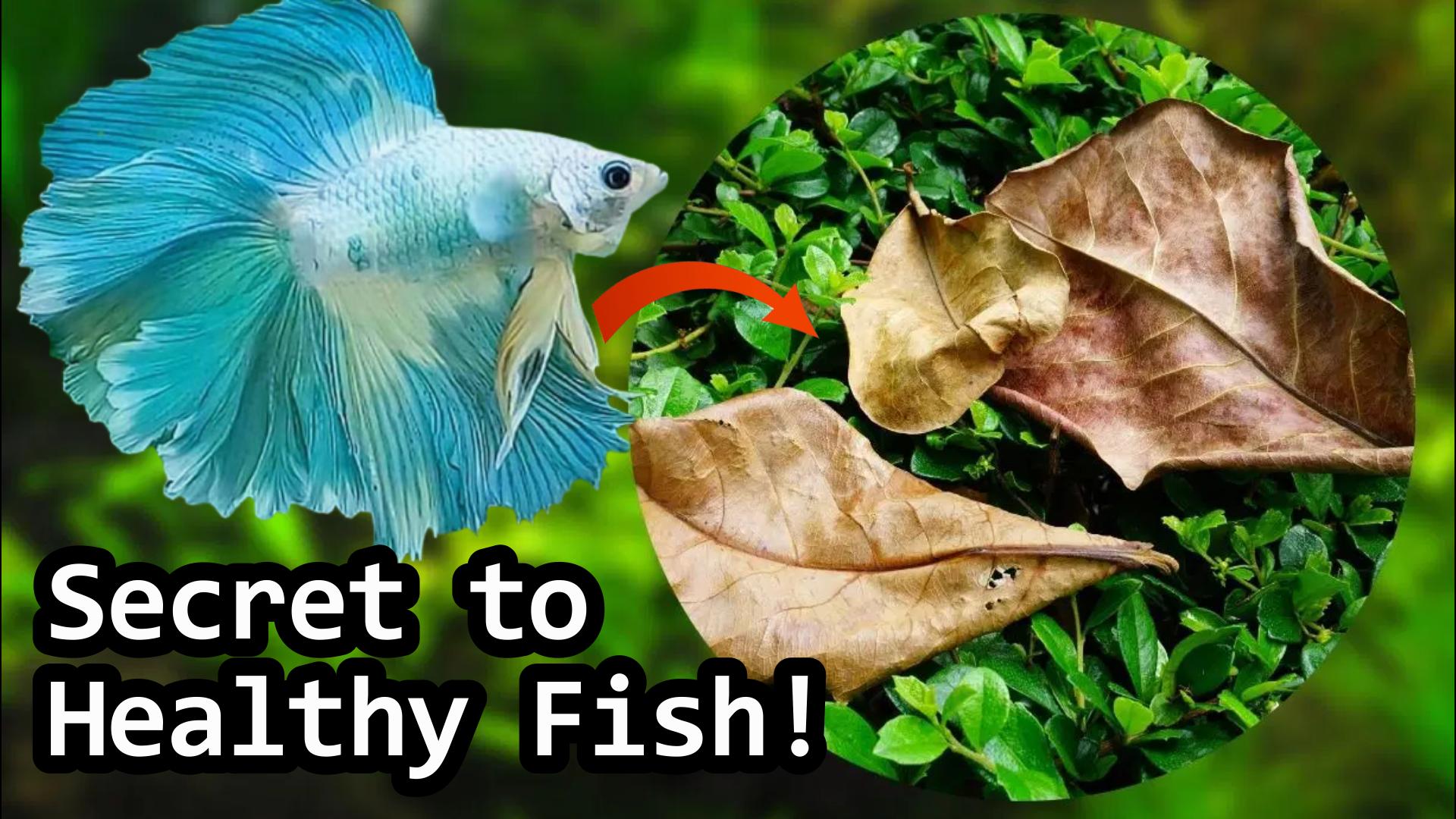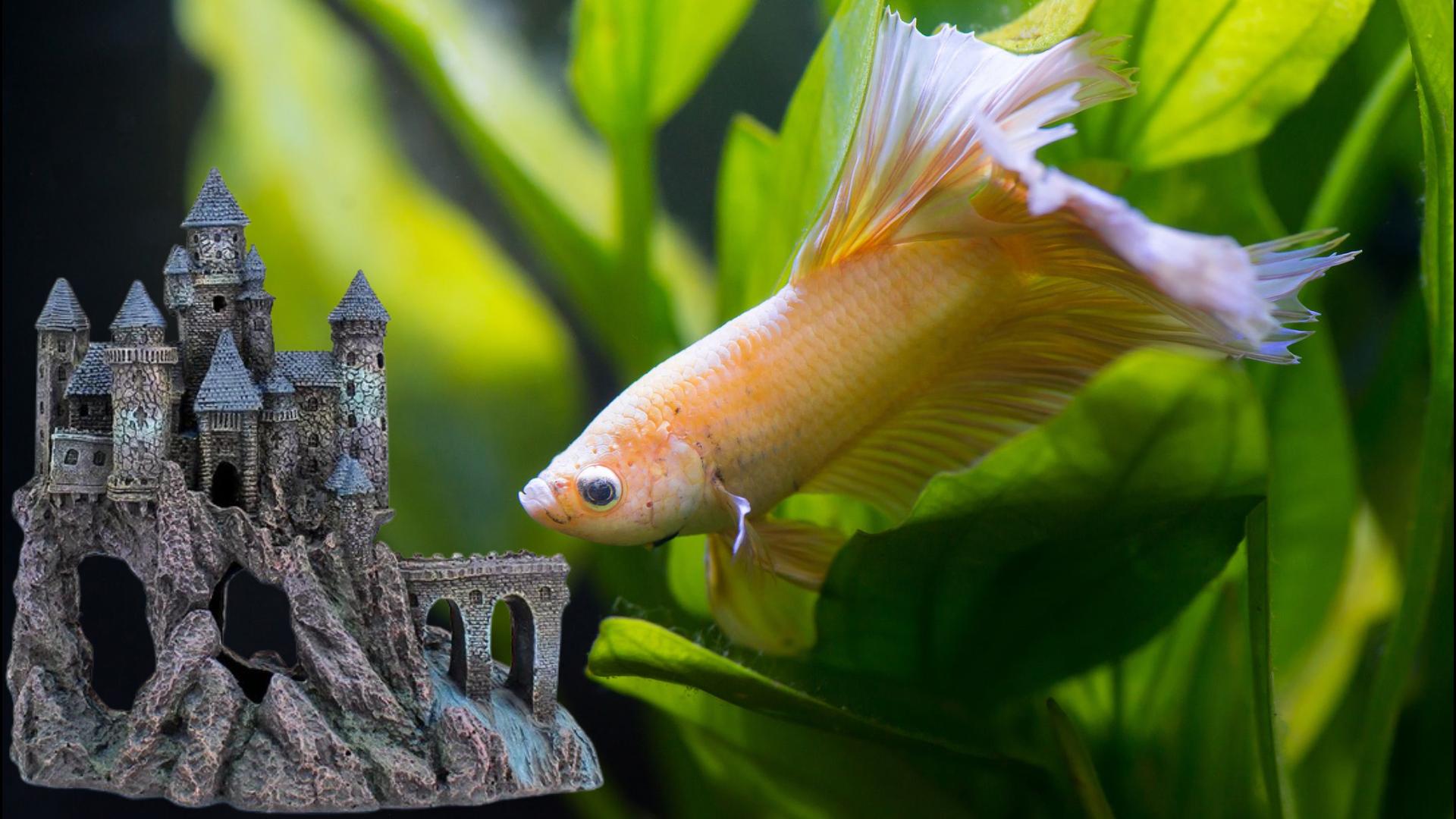Goldfish are the most common freshwater fish across the globe. Proper goldfish care and tank setup are critical to maintaining your fish’s health and keeping them happy.
In today’s post, I will discuss how to create the perfect tank for your goldfish.
Getting Started with the Right Tank
I recommend at least a 20-gallon tank for goldfish. You may need 10 gallons of water for every additional goldfish you add. If you keep 1 or 2 goldfish in a 20-gallon tank, they will eventually outgrow your tank size, which may lead to more cleaning and water changes. In my experience, if you house five or six goldfish in a minimum of a 60-gallon aquarium, tank maintenance will be easier.
Gravel and substrates
I prefer gravel with fine to medium size and smooth edges for my tanks. Goldfish are known for digging through the substrate, so sharp or small gravel must be avoided as they could choke or injure them. It’s important to ensure the gravel is not too small or too big, as it could end up stuck in their mouths while digging.
What Plants are Suitable for a Goldfish Aquarium?
Goldfish are not the best fit for a typical planted aquarium, but there are specific plants that can enrich your tank setup. As you already know, goldfish dig into the substrate, so plants can get uprooted. It’s also important to remember that they may eat live plants. You can choose plants such as microsorum, Java fern, anubias, cryptocoryne, and bolbitis to avoid digging problems or eating.
These hardy plants may not be affected even if goldfish eat them. Additionally, some of their leaves are tough, so your goldfish may not prefer to eat them.
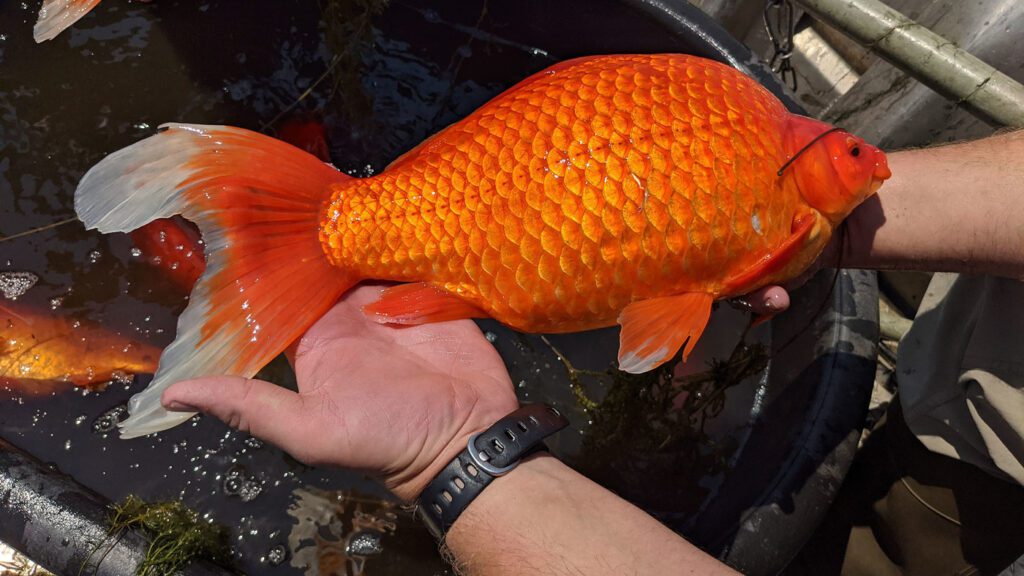
Pick the right decorations
Use roots and stones as decorations. The best thing to do is to avoid sharp items that could injure fish, especially varieties such as lionheads or telescopes that are very prone to injuries. Goldfish are usually not shy fish, so they don’t look for hiding spots rather for more swimming space. Design your tank setup in a way that allows your goldfish to swim free.
Water parameters for goldfish
Goldfish are pretty flexible when it comes to water parameters. However, it is always critical to understand and know your water parameters. Be aware of how your aquarium functions and deals with waste, to ensure your fish live in a stable, healthy, and clean setup.
Also water conditioners are essential for aquarium health. So conditioning your water is essential for fish health, and for the safety of your beneficial bacteria.
Always de-chlorinate your tap water. Usually tap water is treated with chlorine, chloramine, ammonia and other chemicals which are harmful to your aquarium. I have pinned the water conditioner I use. Give it a try.
Purchasing a healthy goldfish
When purchasing goldfish, first check that the seller is reputable and that their aquariums are not overcrowded. I personally suggest avoiding buying from chain pet stores, as I have observed they often come with bad genetics and shorter lifespans. Purchasing from a dedicated aquarium store is a better option because they offer better quality. Also, identify the healthy signs of goldfish while buying; signs include bright color, normal swimming activity, and no signs of disease or injuries.
Aquarium water change
In a mature aquarium, 30-40% of the tank’s water should be changed every week. The smaller the aquarium, the faster water parameters deteriorate. Every tank is different, so you need to work out the frequency of water changes on your own. Good water quality is critical for goldfish’ health. If you have a freshwater fish tank, test it weekly with water quality test kits. Aquarium keepers often overlook this basic step.
I strongly suggest using aquarium test kits to measure your water parameters weekly to ensure your tank is healthy.
Best tankmates for goldfish
Goldfish get along well with peaceful, similarly sized fish. If you are housing without a heater, they should be kept with other fish tolerant of cold temperatures.
However, goldfish prefer to live by themselves, so it’s better to keep them in a goldfish-only tank. They might eat anything that fits in their mouths, including small fish like tetras and cherry barbs.
Common goldfish vs. Fancy goldfish
After generations of breeding, there are over 200 goldfish breeds available in the market. The majority of these pet goldfish fall into two categories: common and fancy. Both types of goldfish can have numerous colorations, patterns, body shapes, fin, eye and tail types.
Common goldfish are small fast-feeding fish. They are single-tailed, have only one caudal and anal fin. Common goldfish varieties include: Common, Comet, Shubunkin, and Sarasa Goldfish.
Fancy goldfish are often bigger, slower, and bred to look more attractive than common goldfish. Their number of fins varies based on their variety. Fancy goldfish varieties include: Nymph, Tamasaba, Wakin, Fantail, Ryukin, Telescope, Butterfly tail, Pompom, Lionhead, Ranchu, Celestial eye, and Bubble eye goldfish. Often, people treat both varieties the same way. However, in reality, fancy goldfish can grow much larger than common varieties, and their water parameters and temperature must be kept according to their region.
For example, if you import goldfish from Asian countries like Thailand, their breeds may be accustomed to warmer water temperatures, so you might need to set up your tank accordingly.
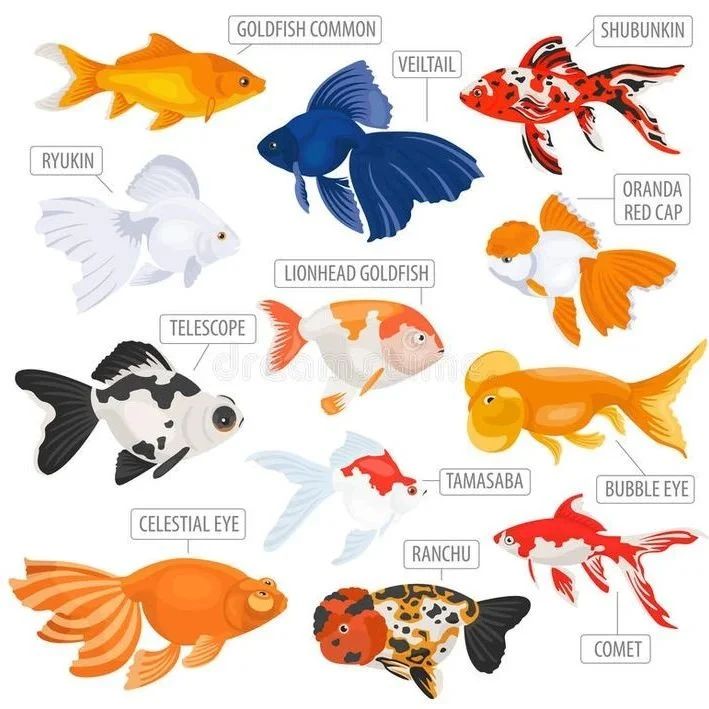
Filtration setup
Goldfish are messy fish. They often produce more waste and dig up the substrate constantly, which causes organic matter in the substrate to mix with the water.
So, your goldfish aquarium should be equipped with the right size filter that recycles your tank frequently. This will ensure a better filter bed, where nitrifying bacteria can settle.
In order to maintain water quality and oxygenation, goldfish need efficient filtration. Good filter setup will ensure water is regularly filtered mechanically and biologically. If the filter does not create bubbles or stir the surface water, aeration with an air stone is needed to ensure that the water is well oxygenated. When selecting a filter, ensure the water current is adjustable.
The current should not be too strong, especially if fancy or unusual goldfish types are to be kept, as fast currents can make swimming difficult for some of these fish.
Proper lighting setup
Fancy goldfish are diurnal fish, most active during the day and sleeping at night. If you keep your tank indoors, where there is no light source throughout the day, consider adding a light to your aquarium. Goldfish with lights in their aquariums tend to be more active, less stressed, and healthier.
There are also a few diseases, such as “Hole in the Head”, that can be prevented simply by providing suitable lighting in your aquarium. I personally keep the lights on for 6-8 hours a day. There are a few different types of lighting you can purchase for your goldfish aquarium, and each has advantages and disadvantages. I have my own recommendations pinned in the first comment. Check it out if you’re interested.
Do Goldfish Need Heaters?
Goldfish are cold-water fish because they live in 52-72°F. This means that in a home with heating and air conditioning, there is no need to use a heater inside the aquarium. This is because goldfish live at room temperature.
But always use a thermometer to double check your temperature and monitor possible fluctuations. Fish are eco-thermic, and cannot produce their own body heat, so it is important to place your aquarium with stable temperature.
Ornamental Goldfish and Sensitive breeds should be provided with an Aquarium Heater with a stable temperature of 72°F which is ideal.
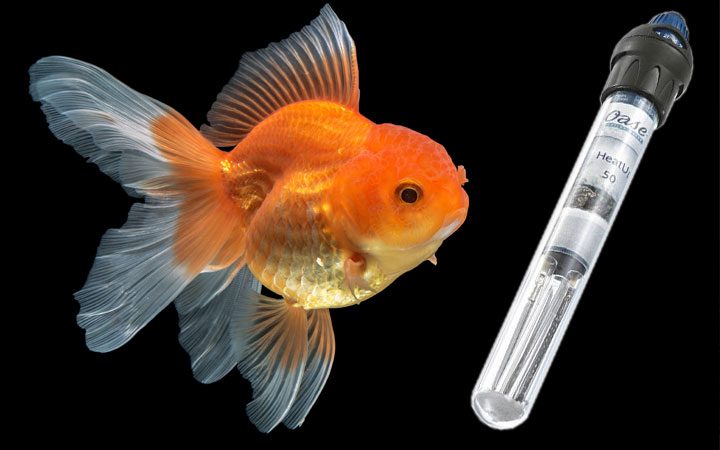
How to Clean a Goldfish Tank?
Of course, any goldfish tank requires regular maintenance to protect water quality and cleanliness. In my opinion, there are four different cleaning tasks to perform every week.
First, gravel your aquarium with a siphon vacuum cleaner to remove waste and food. Clean the inside of the glass using a magnetic scraper to control algae levels. Perform a partial water change of 20-30% each week. Lastly, test your goldfish tank’s water for pH changes, and additional water quality parameters such as ammonia and niriate levels using an aquarium test kit. This is the best way to quickly identify any problems before they become threats to your goldfish’s health. Additionally,
I usually perform a full water change on my goldfish tanks every 4 to 6 weeks, depending on the tank size and number of fish in the specific tank.
Goldfish are social fish.
Goldfish are social creatures; they benefit from the company of three or more fish together. They are remarkably interactive fish and often sit close together or swim around each other, wafting their fins over one another.
This means that any tank needs to be able to house at least three fish to stay in a group and happy. They often sleep in a group, too. So having them in a company helps them to feel secure and provides some social interaction.
A Quick History of Goldfish
Goldfish have been domesticated for a long time—since as far back as 960 AD in China. Over centuries, the Chinese and Japanese selectively bred them into many unique forms, far removed from their wild ancestors, the Prussian carp.
Thanks to natural mutations and breeding, these fish evolved from plain silver-grey colors into vibrant, exotic varieties. One of the more unique varieties is the celestial goldfish, known for its upward-facing eyes.
There are over 100 different varieties of goldfish! While not all types are available in Europe or the U.S., many can still be found in their native countries. If you’re new to keeping goldfish, I recommend starting with hardy types like Comets, Fantails, or Moors.
Once you get the hang of it, you can move on to more exotic ones, such as Water Bubble Eyes, Lionheads, or Celestials.
Goldfish colors are as varied as their types. The most common color is bright orange or orange-red, though you’ll also find black, white, and multi-colored goldfish. Interestingly, goldfish are rarely found in true gold.
Types of Goldfish Fins and Body Shapes
The common goldfish has fins that resemble those of its ancestor, the Prussian carp. However, selective breeding has given rise to many fin variations. There are three main types of caudal fins:
- Single caudal fin – Found in Comets, Shubunkins, and Common Goldfish.
- Twin caudal fins – Found in Orandas, Veiltails, and Moors.
- Twin caudal fins with no dorsal fin – Found in Celestials and Water Bubble Eyes.
Goldfish also have three main body shapes:
- Long and streamlined – Like Comets and Shubunkins.
- Short and rounded with twin fins – Found in Orandas and Moors.
- Short and round but lacking a dorsal fin – Like Celestials, Lionheads, and Bubble Eyes.
Four Goldfish Eye Types
Goldfish can have one of four different eye types:
- Normal eyes
- Telescopic eyes – Found in Moors.
- Upward-facing eyes – Found in Celestials.
- Fluid sacs under the eyes – Seen in Water Bubble Eyes.
It’s best to avoid mixing normal-eyed fish with other types, as the faster swimmers tend to outcompete the others for food.
Feeding Goldfish Properly
Goldfish are omnivores, so they need both plant and animal-based food to stay healthy. However, overfeeding—especially with dry food—can cause water pollution, which is one of the leading causes of death in goldfish.
Any uneaten food quickly decays and raises ammonia levels in the tank, which is harmful to all fish.
Goldfish can tolerate a wide temperature range—from just above freezing to nearly 100°F—but the temperature should change gradually.
They thrive in mid-range temperatures between 55°F (13°C) and 80°F (27°C). Be cautious when moving goldfish from one body of water to another, as sudden temperature changes greater than 5°F (2.8°C) can be dangerous.
How Much Space Do Goldfish Need?
A good rule of thumb is to provide 24 square inches of surface area per inch of fish. Fancy varieties like Orandas and Lionheads need even more space due to their larger body mass.
Goldfish are quite tolerant of different water conditions, whether soft, hard, acidic, or alkaline. However, they do not tolerate low oxygen levels caused by overcrowded or polluted tanks. Using a good filter helps maintain clean water and allows for a higher number of fish.
Goldfish Breeding Basics
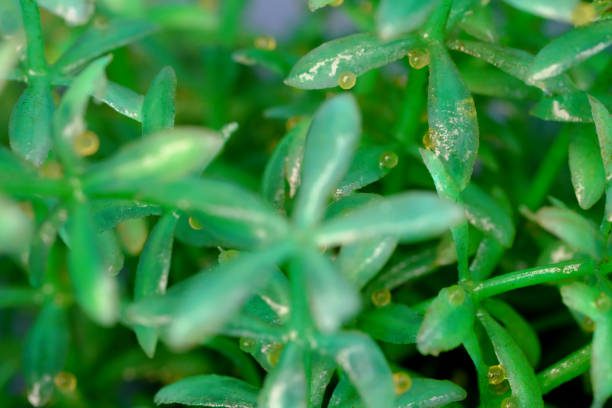
Goldfish are egg scatterers—females lay eggs among plants in shallow water, and males fertilize them as they swim by. Once breeding is over, parents will eat the eggs and fry if not separated. If you’re interested in breeding goldfish, check out our dedicated video on the subject!
Preventing Goldfish Illness
Goldfish often fall ill when water quality deteriorates, weakening their immune systems. The most common cause of death is overfeeding dry food, which leads to dangerous ammonia spikes in the water. Many health problems can be resolved by performing a water change and adding un-iodized cooking salt—about a tablespoon per gallon (3-4 grams per liter).
Goldfish tolerate high salt levels if the concentration is increased gradually.
Building a Balanced Diet for Goldfish
A varied diet will keep your goldfish healthy. Use goldfish flakes or granules as a staple, and supplement with live foods like brine shrimp or frozen options like daphnia and veggie mixes. You can also offer scalded peas, small invertebrates, and duckweed.
Avoid feeding mammalian fats (like beef heart) as these are poorly digested by fish—especially when water temperatures drop below 15°C.
Feed your goldfish 2-3 times a day, giving them only what they can finish in two minutes. A good guideline is to feed an amount no larger than the size of the fish’s eye. Use small floating pellets to keep the tank clean, as excess food is easy to remove.
Maintaining Good Water Quality
Perform regular water changes—20-50% weekly or biweekly—to keep your goldfish healthy. Always treat tap water with a conditioner to remove harmful chemicals. Vacuum the gravel during water changes to clear out uneaten food and fish waste.
When temperatures drop below 8°C, reduce feeding since goldfish’s digestion slows down in colder water.
Goldfish Indoors vs. Outdoors
Goldfish can thrive both indoors and outdoors. If kept outside, the pond should be large enough to prevent sudden temperature drops at night. For indoor setups, a 15-gallon tank is ideal, as it provides stable temperatures. However, outdoor containers of that size may cool down too quickly in some seasons. Outdoor ponds should hold 80-100 gallons to ensure stable conditions.
Protect outdoor goldfish from predators, as their bright colors attract birds and cats. If you train your fish to feed at a certain spot, keep in mind that your cat might start waiting there too!
Can betta fish live with goldfish
Can a betta live with goldfish? Is goldfish food good for betta? Do they fight each other? In this section, I will answer all these questions including why you should not keep them in the same tank.
Water temperature
Goldfish are cool water fish, and they prefer water temperatures of 65 to 74 degrees Fahrenheit. On the other hand, betta fish prefer warmer water which requires a water temperature of 74 to 82 degrees Fahrenheit. Water temperature is perhaps the biggest reason why these two fish cannot be kept together.
Goldfish don’t do well when the water gets too warm, as it affects their metabolism, digestion and immune system. Goldfish that are kept in excessively warm water can suffer from heat and may get sick and have other health conditions. On the other hand, betta fish can’t handle cold water, so they become stressed and lethargic.
If a betta fish continue to live in cold water, its metabolism will slow down, its immunity will weaken, it will become lethargic, eat less, and it will also lead to health issues.
Tank requirements
Betta fish are generally happy in tanks of around 5 or 6 gallons. But goldfish may need a tank anywhere between 20 to 50 gallons, depending on the size of the goldfish. As you can see, goldfish require much more space than betta fish. You may think of putting a small betta fish inside a very large goldfish tank, it may solve the tank requirement issue but lead to other problems.
It is recommended that goldfish have a tank of at least 20 gallons.
Fish waste
Betta fish are relatively clean fish that do not produce much fish waste. On the other hand, goldfish are considered dirty fish and generate a lot of fish waste.
The principle of goldfish is to keep eating anything that fits in his mouth, which will keep producing waste and contaminating the water. Although a betta fish tank requires filtration, you don’t need an extensive setup. Goldfish tanks require extremely good filtration to keep the water clean.
The filtration system of a goldfish tank usually keeps the tank busy with high water flow rates. But betta fish do not do well with high water flow, especially if you have large fin betta fish.
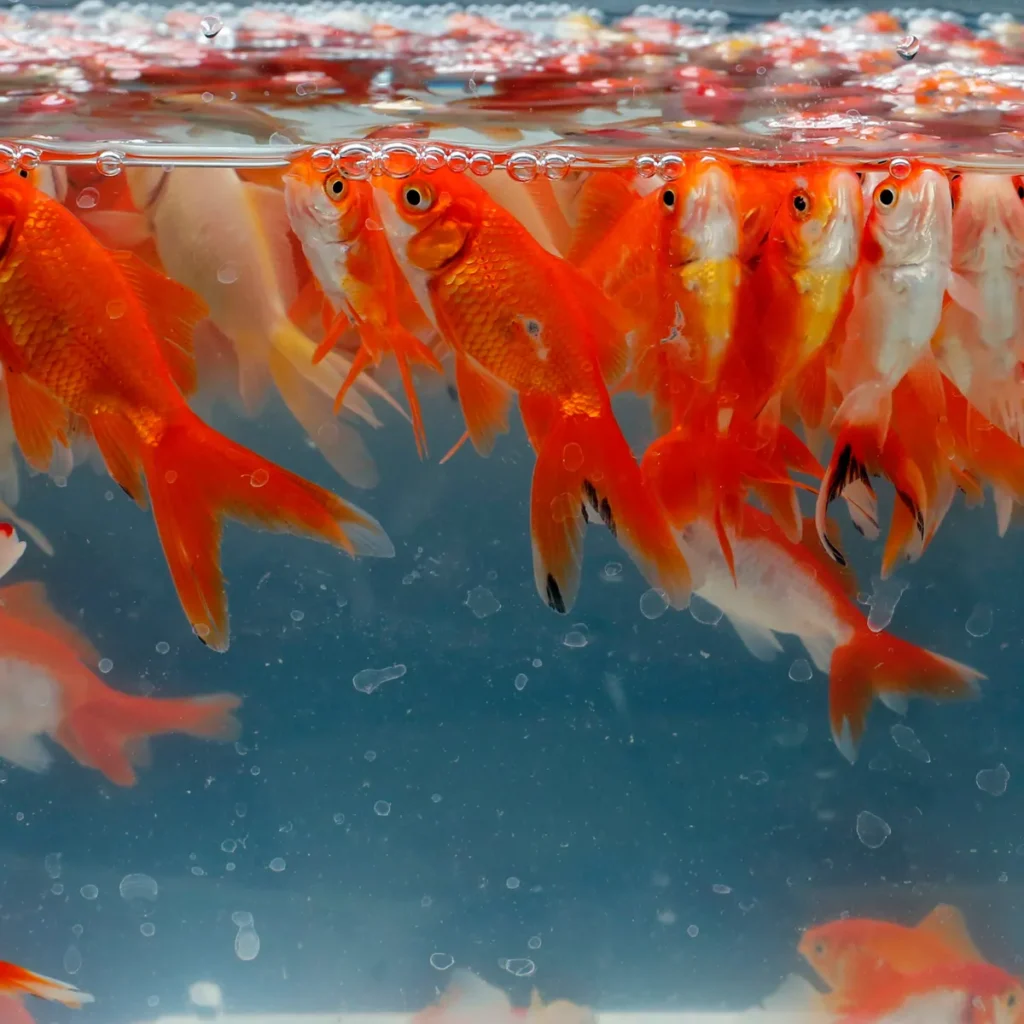
Temperament
Betta fish generally do not like being kept with other fish, especially those with long flowing fins. Now, considering that fancy goldfish have relatively have long fins, betta fish’ fighting instincts will get triggered. This often results in aggression and fin nipping. Betta fish are capable of causing extreme injury or death to goldfish. On the other hand, goldfish are messy fish and follow no rules in the tank. They have the habit of swimming all around the tank. This triggers betta fish while goldfish cross their territory more often to attack them.
Feeding issues
Goldfish eat a lot. They’ll eat mostly anything that they can fit their mouth. If a small betta fish is unlucky enough to be caught by a goldfish, it will surely become a snack. It is common for very large goldfish to eat other smaller fish in their tanks, this includes betta fish. Goldfish food often contains more vegetables and wheat flour than protein content.
If food don’t contain over 40% protein, its not good for betta fish. Gold fish are known as fast eaters, and often they left nothing for Betta fish to consume. So it’s critical to feed them accordingly by paying attention to the amount of food Betta consumes during every feeding.
Can you keep Bettas and Goldfish together temporarily?
If you have an emergency or temporary situation, you can put your betta in your goldfish tank for a few days. As long as you take care of feeding and temperature issues, they can survive together in a community tank for a few days.
Now the final reason is you should not consider putting them together. Goldfish don’t have stomachs, they only have long intestines. So they often don’t realize and keep eating as much as you feed them including portions you feed for betta.
This behavior of goldfish produces more wastes and increases the chances of ammonia spikes in your tank. Betta fish are extremely vulnerable to ammonia poisoning, which can cause several health issues and potentially kill them. It’s one of the main reasons you should avoid keeping them together.


